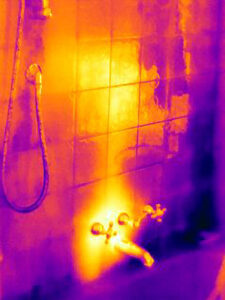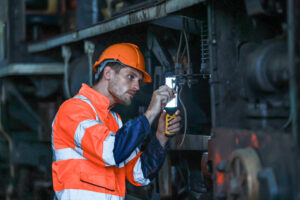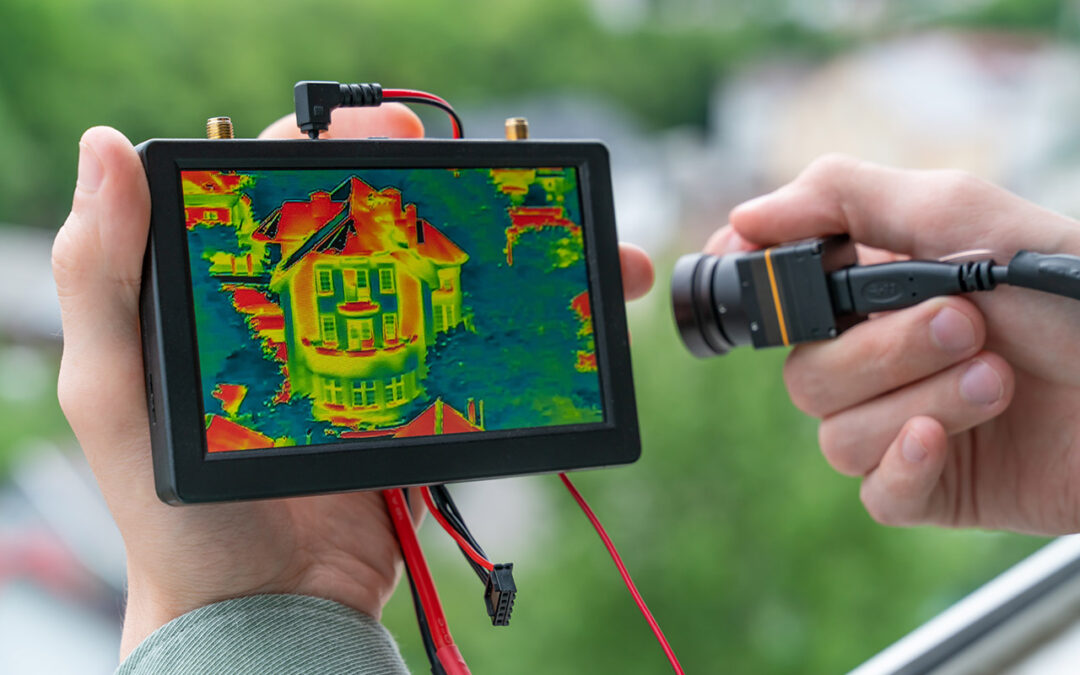Unlocking the Power of Infrared Leak Detection for Your Home or Business
 In the quest to maintain the integrity and safety of residential and commercial properties, infrared leak detection emerges as a game-changer. This sophisticated technology, utilising thermal imaging, offers a non-invasive, accurate, and efficient means of identifying leaks that would otherwise remain hidden from view. By detecting subtle temperature differences, infrared leak detection can pinpoint moisture, gas, and air leaks, facilitating early intervention. This article delves deep into the workings, advantages, and practical applications of infrared leak detection, providing property owners with essential insights for protecting their investments.
In the quest to maintain the integrity and safety of residential and commercial properties, infrared leak detection emerges as a game-changer. This sophisticated technology, utilising thermal imaging, offers a non-invasive, accurate, and efficient means of identifying leaks that would otherwise remain hidden from view. By detecting subtle temperature differences, infrared leak detection can pinpoint moisture, gas, and air leaks, facilitating early intervention. This article delves deep into the workings, advantages, and practical applications of infrared leak detection, providing property owners with essential insights for protecting their investments.
The Science Behind Infrared Leak Detection
Principles of Infrared Technology: Infrared technology operates on the principle that all objects emit infrared energy, or heat, detectable by thermal imaging cameras. These devices convert the energy into a visible light spectrum, producing thermal images or thermograms. Differences in temperature appear as various colors on these images, allowing experts to identify areas of concern that indicate potential leaks.
How Infrared Identifies Leaks: The effectiveness of infrared technology lies in its ability to identify temperature variations caused by moisture evaporation, air drafts, or escaping gases. For instance, a wet area will cool faster than its surroundings due to evaporation, appearing as a distinct, cooler area on a thermal image. Similarly, escaping gas from a pipe can change the local temperature, making it visible to the infrared camera. This section explains the process, providing a clear understanding of how infrared technology uncovers hidden leaks.
Benefits of Infrared Leak Detection
Non-Invasive Nature: One of the most compelling advantages of infrared leak finding is its non-invasive approach. Unlike traditional methods that may require drilling, excavation, or wall opening to locate leaks, infrared inspections can be conducted without any physical intrusion. This characteristic not only preserves the structural integrity of a property but also reduces the cost and time involved in leak detection.
Speed and Efficiency: Infrared leak detection is significantly faster than conventional methods. A comprehensive scan of a building can be completed in a fraction of the time it would take to manually inspect the same area. This speed, combined with the method’s efficiency, makes it possible to identify and address leaks promptly, minimising the potential for extensive damage.
Accuracy and Precision: The precision of infrared technology ensures that leaks can be detected with remarkable accuracy. This minimises unnecessary repairs and focuses efforts precisely where they are needed, ensuring that resources are used effectively and efficiently.
Applications of Infrared Leak Detection
 Residential Use: In homes, infrared detection can be a powerful tool for identifying hidden water damage, plumbing leaks, and areas of energy loss. It can reveal issues behind walls, under floors, and above ceilings, allowing homeowners to address problems before they escalate into major repairs.
Residential Use: In homes, infrared detection can be a powerful tool for identifying hidden water damage, plumbing leaks, and areas of energy loss. It can reveal issues behind walls, under floors, and above ceilings, allowing homeowners to address problems before they escalate into major repairs.
Commercial and Industrial Applications: For businesses and industrial facilities, the stakes are high when it comes to maintaining operational integrity and safety. Infrared detection can identify leaks in vast networks of pipes and ducts, pinpointing problems in complex machinery and electrical systems. This capability is invaluable for preventing downtime, ensuring safety, and optimising energy use.
Implementing Infrared Leak Detection
Conducting an Infrared Inspection: A successful infrared inspection requires expertise and precision. Professionals equipped with high-quality thermal imaging cameras systematically scan the property, focusing on areas known for potential leaks. Understanding the process, from preparation through to the interpretation of results, empowers property owners to effectively utilise infrared technology.
Choosing a Professional Service: The effectiveness of leak detection is heavily dependent on the skill of the operator and the quality of the equipment. This section provides guidance on selecting a reputable service provider, including what qualifications to look for, the importance of experience, and how to ensure you’re getting comprehensive service.
DIY vs. Professional Infrared Inspections: While consumer-grade infrared cameras are available, professional inspections offer a level of detail and accuracy far beyond what DIY enthusiasts can achieve. Discussing the limitations of DIY approaches underscores the value of professional services.
Best Practices for Infrared Leak Detection
Regular Maintenance Inspections: Incorporating infrared leak detection into regular maintenance schedules can prevent minor issues from becoming major problems. This proactive approach is cost-effective and can extend the life of a property.
Integrating Infrared Inspections Post-Repair: After repairs are made, infrared technology can verify their effectiveness. This ensures that the issue has been fully resolved and helps validate the quality of the work performed.
Future Trends in Infrared Technology
Advancements and Innovations: The field of infrared technology is rapidly evolving, with new advancements enhancing its application in leak detection. This section explores the latest innovations and how they promise to improve the accuracy, affordability, and accessibility of infrared inspections.
Incorporating AI and Machine Learning: The integration of artificial intelligence and machine learning with infrared technology holds the potential to revolutionise leak detection. This could lead to predictive maintenance capabilities, where systems anticipate failures before they occur, offering a new level of efficiency in property management.
Conclusion
Infrared leak detection stands as a pivotal innovation in property maintenance, offering a blend of accuracy, efficiency, and non-invasiveness that traditional methods cannot match. For home and business owners alike, understanding and implementing this technology can lead to significant savings, prolonged property life, and enhanced safety. As advancements in infrared technology continue to unfold, its application in leak detection is set to become even more indispensable, marking a new era in proactive property management.
FAQ
What is infrared leak detection? Infrared leak detection uses thermal imaging to identify hidden leaks by detecting temperature differences in materials.
How does it work? It captures heat emitted by objects and shows temperature variations on thermal images, revealing potential leaks.
What are the main benefits of infrared leak finding? It’s non-invasive, fast, efficient, and highly accurate, minimising unnecessary repairs.
Can infrared detection be used in both homes and businesses? Yes, it can identify leaks in residential, commercial, and industrial properties.
Should I hire a professional for infrared leak detection? Yes, professionals offer greater accuracy and detail with their expertise and high-quality equipment.
Want to speak with an expert? Our leak detection team is on hand to give you an assessment on your leak problems. Click the button below now to get started.





